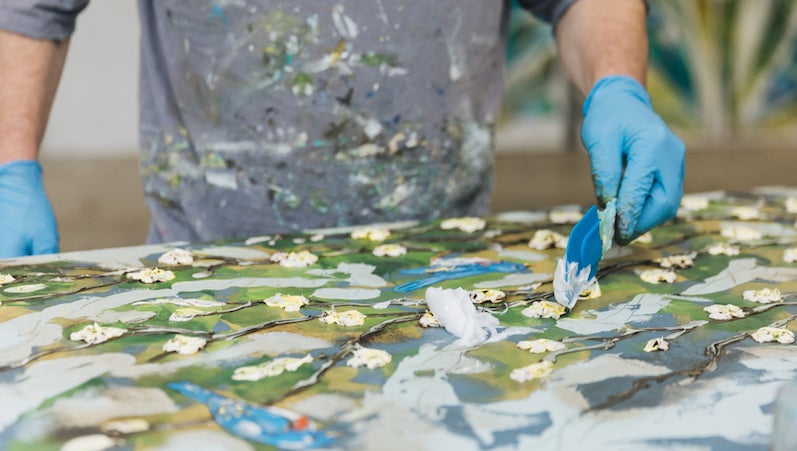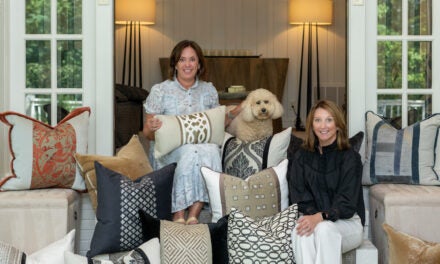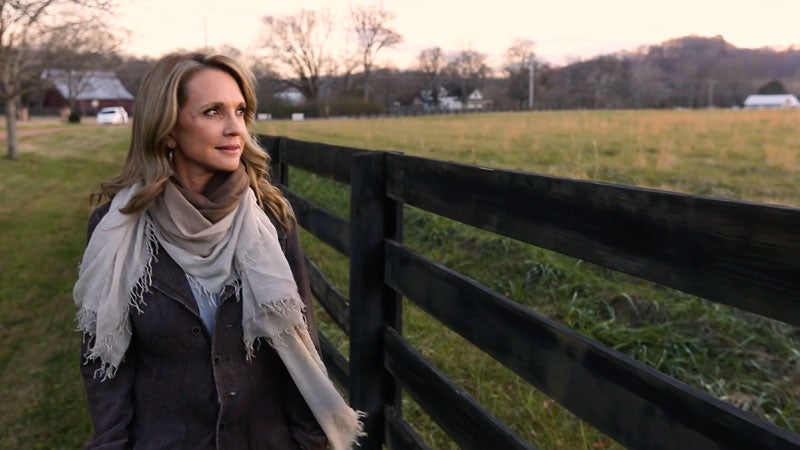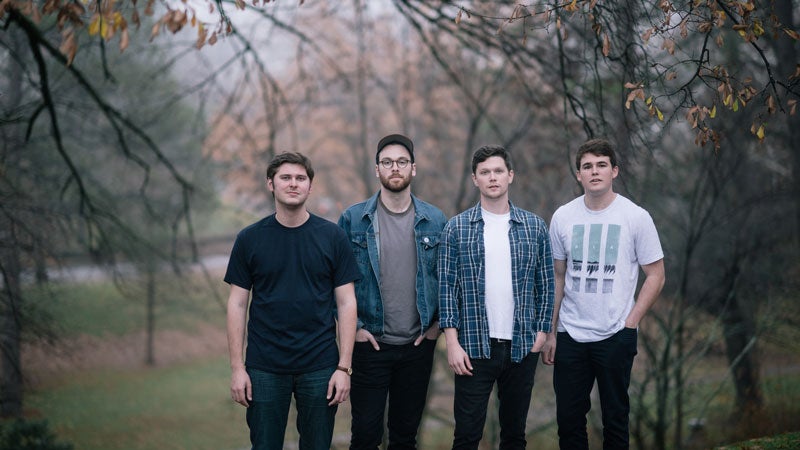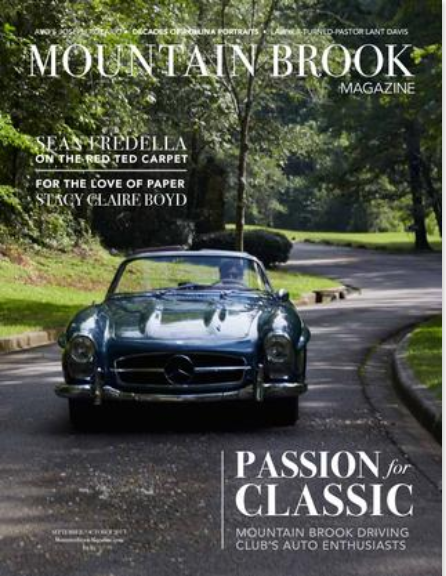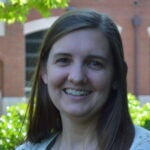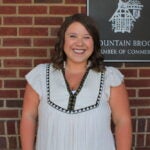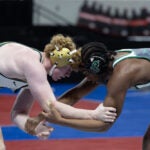In Eddie Powell’s studio, a new collection sits across the wall from his classic pieces. Both styles speak in blues and greens and move with a similar energy, but they’re the products of two different points in Eddie’s career.
The new look, which he describes as organic modern, is something he recently began creating with sheets of acrylic paint. “I’m placing them, ripping them and putting the pieces together like a puzzle,” he says. “From there, I get into this zone of letting the shapes make a shape from that. I’m letting the piece dictate what shape to grab or to make. It’s more of an abstract approach, playing off what you’ve done right before.”
Eddie is introducing this new style as he rounds out his fifteenth year as a full-time painter. Before selling his first piece in 2005, he was an award-winning art director at advertising agencies in New York City, Atlanta and Birmingham. “Then I decided I was going to bring the paintbrushes out. I’ll paint some and see what happens,” Eddie says.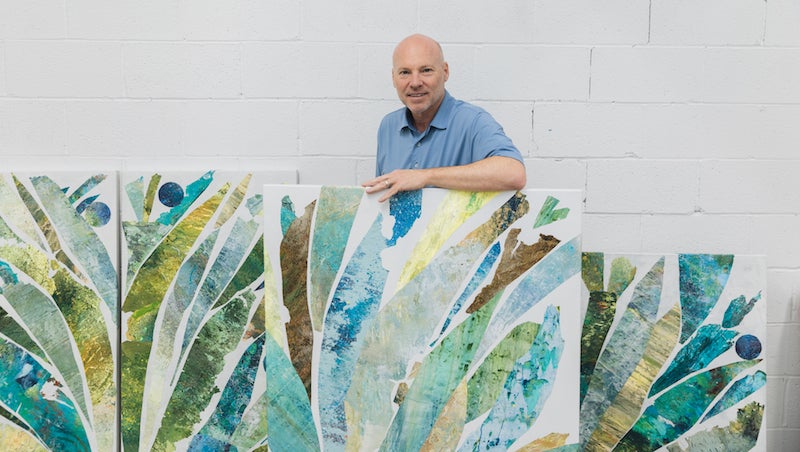
Sometimes, he’ll still have the instinct to add a headline or slogan for his work, or to think of each subject as a billboard. “I was the idea guy,” he says. “So, the art became an idea. That’s why it’s different and why it’s still unique—it’s a process that came from an idea,” he says. And that process, even in his new work, is created through layers of acrylic paint.
Eddie often works on multiple pieces at a time, adding layer after layer and watching the pieces come together. A few of his classic subjects are florals, bikes, trees and landscapes, all done with heavy acrylic paint and sealed with varnish. These pieces are more defined while his new work is more flowing and abstract, but both capture moments in nature.
The process—more than the subjects he chooses —is the power behind Eddie’s work. He creates texture and movement on canvas through his relief painting method as he repeatedly applies paint, removes it and shapes it. Tree branches and ocean foam nearly emerge off the surface.
For creating the texture, Eddie’s best tools are spatulas, forks and knives. “When I walk the kitchen aisle at Target, I ask, ‘What can I use that for in my painting?’” he says. “That’s what’s interesting to me.” The utensils allow him to bring up paint from the surface and pair strong and sharp textures with a softer, natural color palette.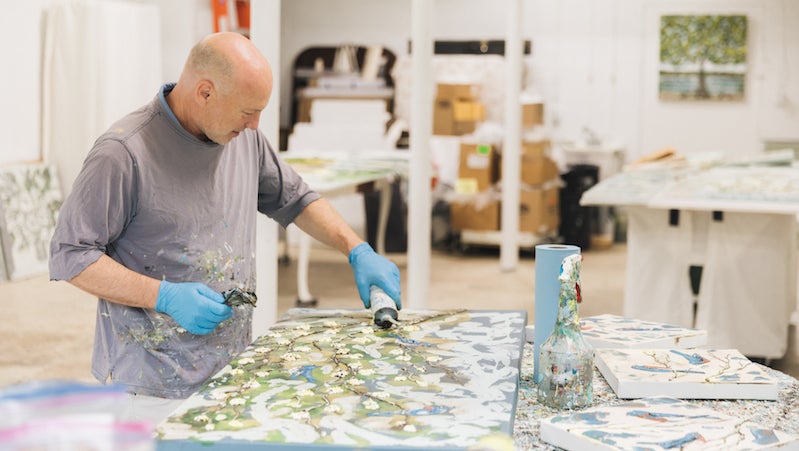
Color seems to bind all of Eddie’s work together too, even as he explores a new concept. During his first couple of years of painting full time, he opened a gallery on 30A and painted scenes from the Florida Gulf Coast, which easily paired with his style. “I gravitate towards blue and green, and nothing became more apparent than when I was painting on 30A,” he says. “They love green and blue and still do. And my work will always have a water feel to it.”
After moving back to Mountain Brook, he continued to build his career through shows and, for a time, wholesale work for the Atlanta market and Biltmore Estate shops. The wholesale business became overwhelming and demanded a large quantity of pieces, so art shows are where Eddie has established himself.
He’s now a returning artist at quite a few prestigious shows including the Harding Art Show in Nashville and Spotlight on Art at Trinity School in Atlanta. There, people know his body of work. They recognize his beach cruisers, his trees by the water, his flowering still lifes.
But right now, it’s the new collection—the organic and freeform abstract work—that brings him the most joy. “As an artist, you’re always wanting to try something new and trying to better yourself,” he says. “You have to throw it out there. You just want to go all in on the new stuff, not get held back.”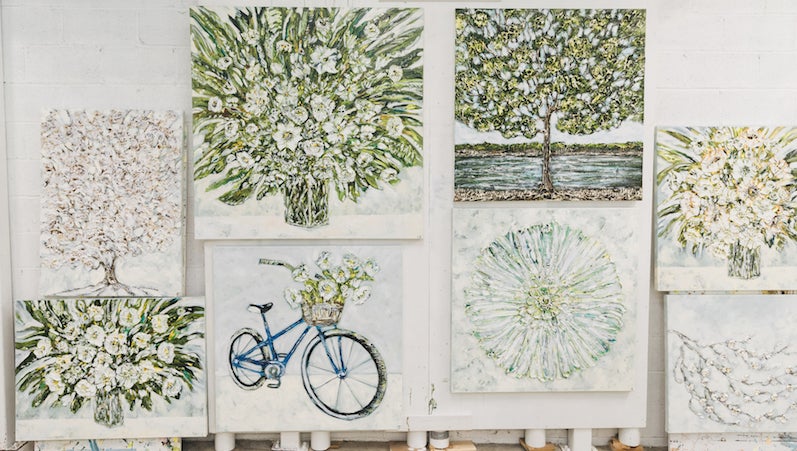
As an art and creative director, and now as a painter and business owner, new ideas and techniques are natural for Eddie. He knows that in hundreds of pieces in homes across the country, there are styles and ideas he was experimenting with that he decided to paint over, now hidden underneath the textured work.
The creative process is like going back to his days in advertising and the parts about his job that he loved most. He would pitch and perfect an innovative idea and then get to see that idea capture a client or a company.
Eddie now finds that moment when he sees someone pick out a piece of his art. At the Mountain Brook Art Association’s Crestline show, he’ll meet people who years ago bought a piece, or he’ll talk to real estate agents who can show him his work hung in homes around the area.
His new work, however, is yet to become something he’s known for in the Mountain Brook community and beyond. But like the pieces he’s painted for years, the same innovative process, the depiction of beauty, and the artistic exploration of each subject is all there.
“If you have a lot of ideas, it’s more difficult to be strapped to doing one thing. True artistic endeavors can be risky. So this is the new challenge.”
You can find Eddie’s work in Thomas Andrew Art and Four Seasons Gallery, as well as on Facebook and Instagram @eddiepowellart.
The Coast and the Mountains
In both places he’s lived as a painter , Mountain Brook and the Florida Panhandle, Eddie has captured the natural landscape around him. Particularly when he was on 30A, he painted the places people knew, like the Western Lake between Destin and Panama City Beach. His organic, water-like style brings a new life to the beaches.
As for Mountain Brook, Eddie has always felt a connection between the neighborhood and where he grew up on Lookout Mountain outside of Chattanooga. Though he’s created his own style that sets him apart from other trends, the outdoor landscape is something essential to his work and pulled from what’s around him.

